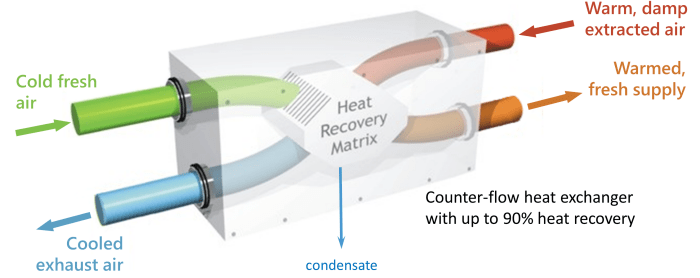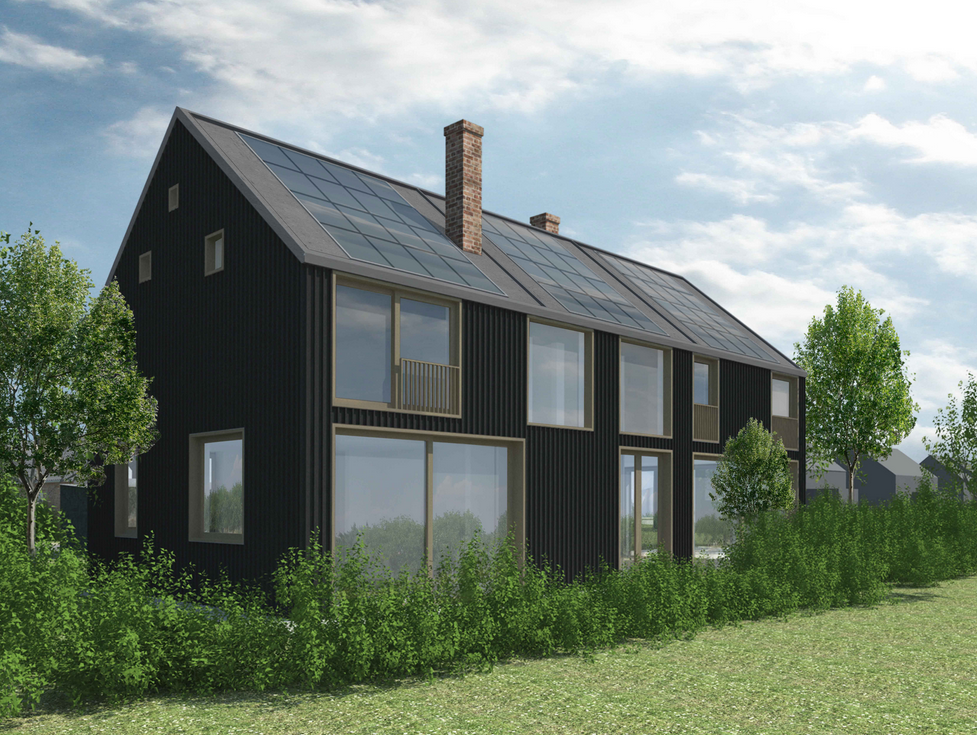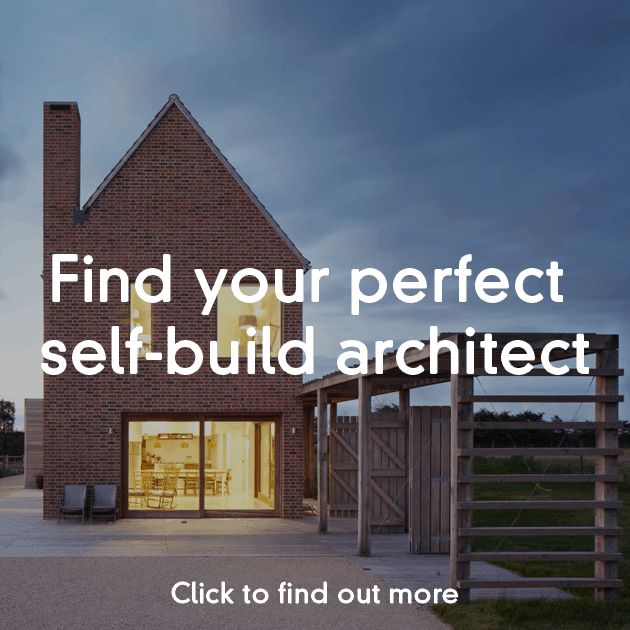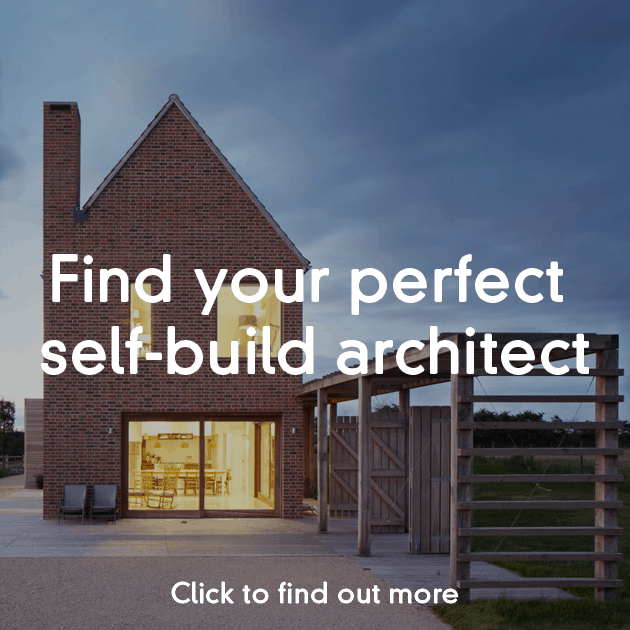Extension design above by Tom, architect from Hackney, London. See more and shortlist them for your home project here.
If you’re thinking of building your own house, you have probably thought about its green credentials. The ambition to have an ‘eco home’ is becoming increasingly popular, but what actually is an eco house!?
If you are right at the initial phase of the project, the best thing you can do now is understand all the jargon that will be thrown at you over the next few months. It will help you make the right decisions and ask the most appropriate questions during the design process. So, we are here to help!
What is an eco home or eco house?
An eco home is bit of a catch-all term and you could say that it’s actually more like a spectrum where, at the lowest end, it simply goes beyond the norm of environmentally friendly or ‘green’.
Eco house design is not just about energy consumption or generation, it can also encompass the relationship to the natural surroundings, the health and wellbeing of the occupants, or the impact on the local area.
Before you set off down the path of building your eco home, you should consider what is important to you and why you have an ambition to be eco conscious. This will help you choose from the vast array of options available under the eco design umbrella. You may decide to follow a well-trodden, standardised route e.g. the Passivehaus standard (see below) or you might pick and choose different techniques. So, the most important question to ask yourself is…
Why do you want to build an eco house?
“I’m concerned about the house’s carbon footprint”
Environmental impact is really the cornerstone of eco design and most eco home builders share this ambition. There are various strategies to reduce the carbon footprint of your home, which can loosely be split into three camps:
- Fabric first
- Renewables and add-ons
- Embodied energy and life-cycle of building
Fabric First
Fabric first is about making early, sensible design decisions so that the house is inherently efficient at keeping itself warm (or cool) and reducing the reliance on gas and electricity. If you are building a house from scratch, you have the luxury of this approach which can be very effective ‘eco-wise’ as well as cost-wise in comparison to renewables and add-ons mentioned below.
Some common fabric first techniques are:
- double or triple glazed windows
- good levels of airtightness (and an MVHR unit is usually needed to balance this with the need for fresh air – see below)
- careful consideration of building orientation and amount of glazing in relation to the sun to ensure temperature and light levels are optimal.
- thermal mass of building materials to absorb and store heat and release it slowly.
Renewables and add-ons
These strategies are not inherent in the building’s fabric and design, but reduce your reliance on external energy and water supply:
- heating via a renewable source e.g. solar, biomass or heat pumps
- electricity from PV (photovoltaic panels) or wind turbines
- rainwater harvesting
- greywater collection
- composting toilet
- LED lighting.
Embodied energy and life cycle of building
Embodied energy is all of the energy consumed in the creation of the house. This includes the energy used in the construction processes, right to the energy consumed in the manufacture and delivery of materials. The life cycle approach goes even further, considering also the operation and disposal of things. Materials should ideally be:
- natural
- locally sourced
- recycled
- re-usable.
Alternatively, you may decide to incorporate materials that have high embodied energy, but actually go some way to improve the eco credentials of your home. For example, concrete is a man-made material with a high embodied energy but it has good thermal-mass properties, making it great at absorbing heat and storing it; reducing your reliance on heating systems.
“I’d like low energy bills”
If this is your main motivation, undertaking many of the above strategies in your build will ensure that your bills are low. Unless you are adapting an existing building, it is typically more cost-effective to adopt the fabric first approach as this can dramatically cut down your bills without the need to pay high upfront costs of renewables like solar panels and heat pumps.
Passivhaus or ‘Passive House’
Passivhaus or ‘Passive House’ is a performance standard developed in Germany in the 1990s, and the standard is much higher than our UK building regulations. It uses the ‘Fabric First’ principle, where the main ambition is to build a house that is inherently super efficient at staying warm (and/or cool depending on climate) without the need for conventional heating/cooling systems. This is a great approach if your main concern is keeping the running costs of the house right down. The main strategies involve high thermal performance (e.g. excellent insulation levels) and exceptional airtightness with mechanical ventilation (see MVHR definition below).
MVHR unit
A mechanical ventilation with heat recovery unit is a bit of a must in a Passivhaus (see above). Why? Well if a building is so well insulated and airtight, there needs be some way for the fresh air to enter. An MVHR takes the fresh air in but, at the same time, warms it up by recovering the heat from the stale air it’s replacing.

Image source: https://www.heatspaceandlight.com/
“I’d like our house to contribute to our health and
wellbeing”
Healthy Homes
Healthy Homes is an approach that goes beyond traditional eco design to focus on the health and wellbeing of a house’s occupants. There is even a term ‘sick building syndrome’ where the occupants experience ill health or discomfort that appear to be directly linked directly to the time spent in the building. The Healthy Homes objective is mainly concerned with:
- air quality
- warmth
- acoustics
- light.
Materials are also a big focus, with a view towards using natural materials to improve psychological wellbeing.
“I want to live in a house that’s connected to nature”
Biophilic house
Biophilia is a love of nature and so biophilic house design is all about creating a connection with nature. It often goes hand in hand with the ambition above to create a space that promotes health and wellbeing.
Replacing the ecology
Green roofs and green walls are a popular addition to an eco house. Aesthetically it can help the house to blend in with its natural habitat, but it also helps to replace the wildlife and ecology the house may have disturbed during construction.
Your eco house architect
It’s important for you to have a basic understanding of eco design principles, but the most critical thing is that you find the right architect to guide you through the design decision making process.
Here at Design for Me, we can match you with the perfect architect for your eco build project. Choose up to three interested design professionals for an initial consultation. And it’s all completely free!
- Quickly see who’s interested in your job.
- Create a shortlist.
- Invite up to three for a no-obligation consultation.
Emily Design for Me


